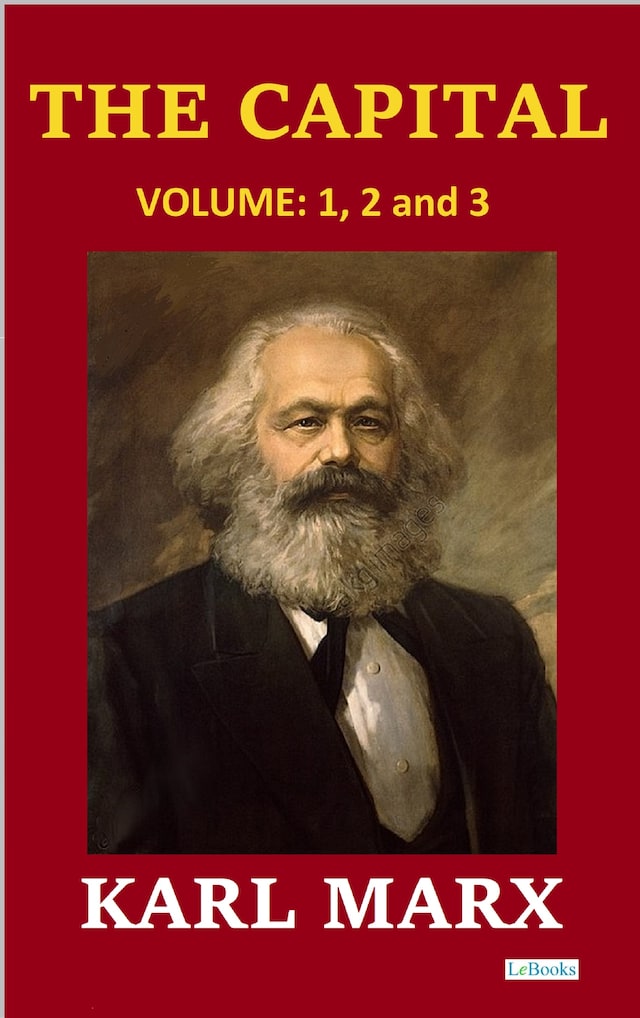
THE CAPITAL - Karl Marx
Volume 1, 2 and 3
Beskrivning av boken
Capital: Critique of Political Economy, commonly known as
Das Kapital, is a foundational theoretical text in communist philosophy, economics, and politics by Karl Marx. The first volume was published in 1867, with subsequent volumes published posthumously by Engels based on Marx's notes.
Structure and Content
Capital is divided into three volumes, each addressing different aspects of capitalist production and economics:
Volume I: The Process of Production of Capital - This volume focuses on the production process of capital. It introduces key concepts such as commodity, value, surplus value, and the role of labor in creating value. Marx analyzes how commodities are produced and exchanged, and how the exploitation of labor leads to the accumulation of capital by the bourgeoisie.
Volume II: The Process of Circulation of Capital - Published posthumously in 1885 by Engels, this volume examines the circulation process of capital. It explores the dynamics of how capital moves through various stages, including money capital, productive capital, and commodity capital. Marx discusses the circulation of commodities and money, the role of credit, and the impact of these processes on the economy.
Volume III: The Process of Capitalist Production as a Whole - Also published posthumously by Engels in 1894, this volume integrates the findings of the first two volumes and presents a comprehensive analysis of capitalist production as a whole. It addresses topics such as the tendency of the rate of profit to fall, the formation of an average rate of profit, and the interplay between different sectors of the economy.
Style and Narrative
Marx's writing in
Capital is characterized by its rigorous and detailed analysis of economic concepts and processes. His style combines theoretical exposition with empirical evidence, drawing on historical examples and contemporary economic data. Marx employs dialectical reasoning to explore the contradictions inherent in capitalist production and to demonstrate how these contradictions drive the dynamics of the system.
 Karl Marx
Karl Marx 721 Sidor
721 Sidor